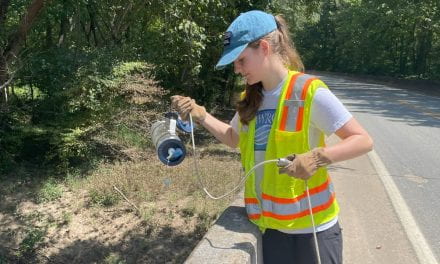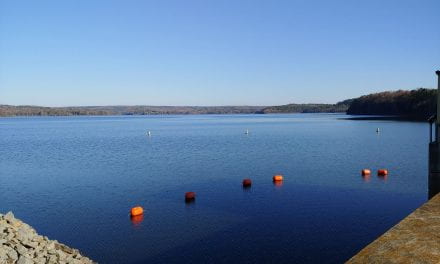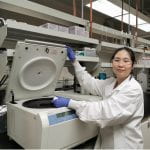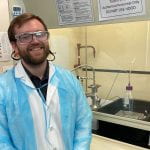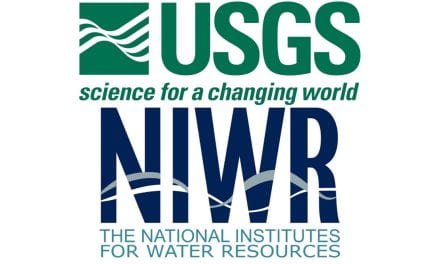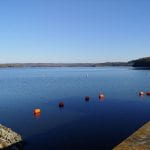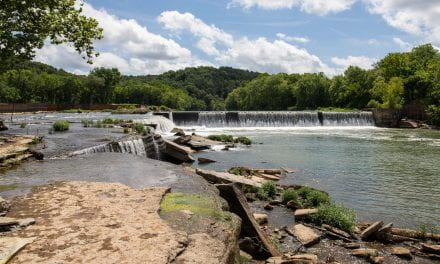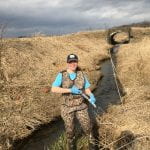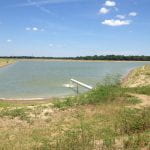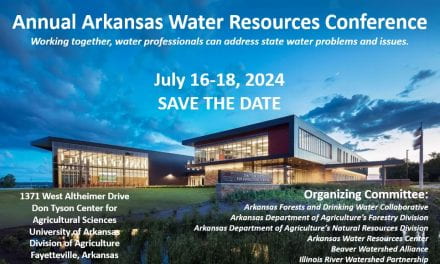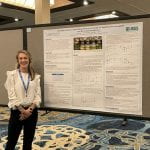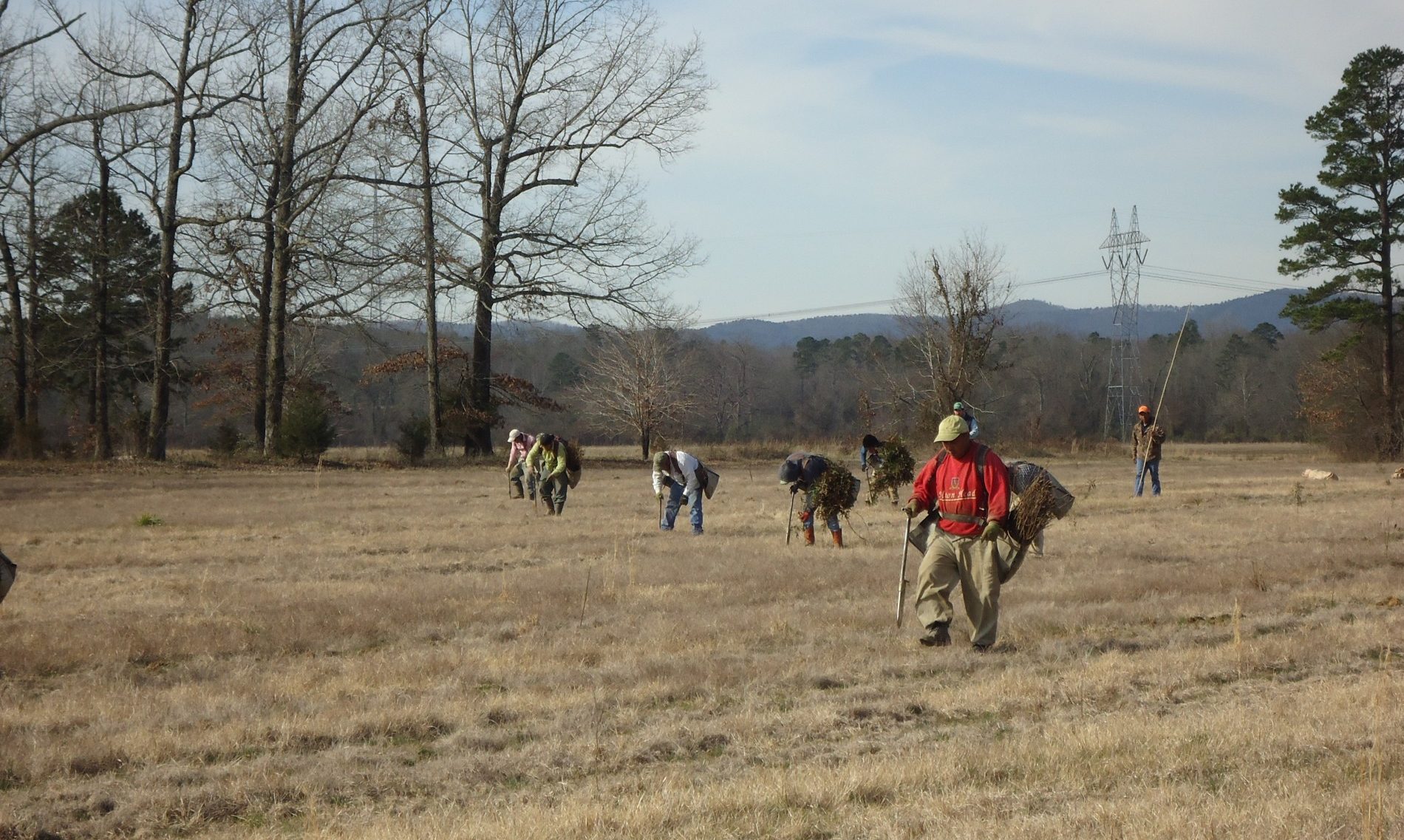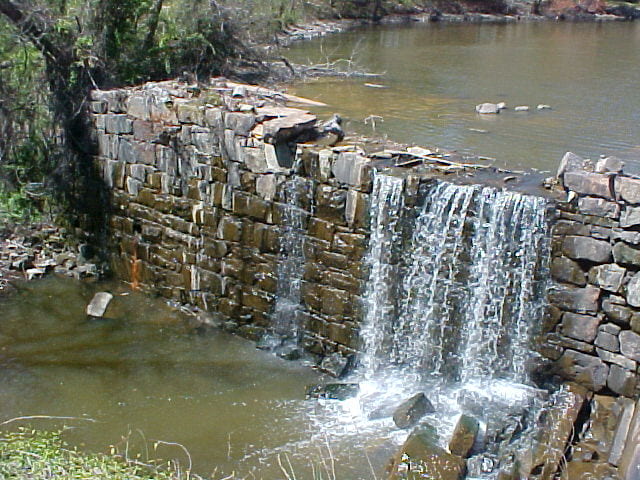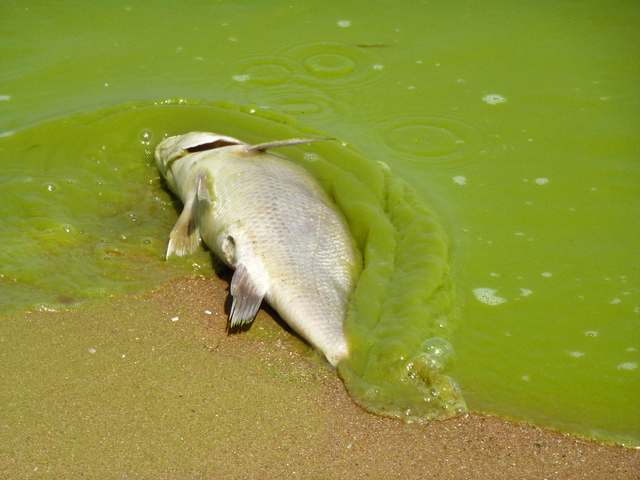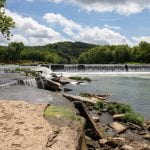
Researchers Use Microbes to Track Contaminants in Karst and Surface Water Systems
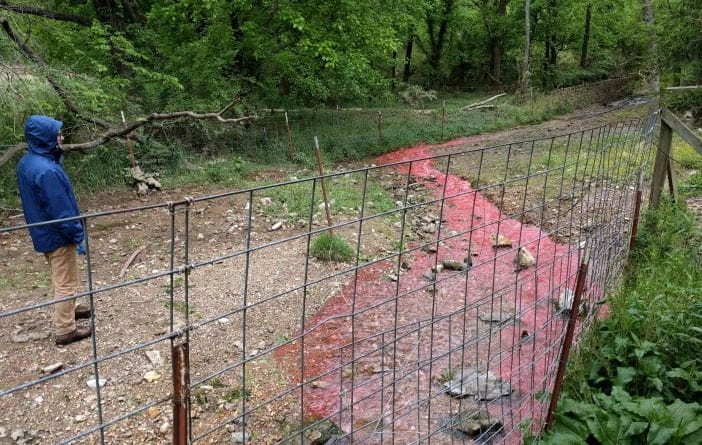
Karst topography is a prominent feature of much of the Ozark Highlands ecoregion, including in Northwest Arkansas. In karst systems, groundwater and surface water are highly connected because of the porous structure of the karst geology. Pair this interconnectedness with agriculture and the rapid urban growth seen in this region over the past several decades, and there is potential for contamination of waterways.
Dr. Matt Covington, Associate Professor in the Department of Geosciences at the University of Arkansas along with his graduate student, Josue Rodriguez, and colleague Dr. Kristen Gibson, Associate Professor in the Department of Food Sciences, looked at how contaminants entering karst cave systems might influence water quality in a nearby receiving stream.
To do this, they measured the microbial community in Blowing Springs Cave (“cave”) and Little Sugar Creek (“stream”), near Bella Vista, Arkansas. They collected water and sediment samples each month from several sites in the cave and stream during base flow and twice during storm events.
Their results show a surprising divergence in the microbial community in the water between the cave and the stream, suggesting that different sources and circumstances might be at play.
“While the cave system contributes to the flow of Little Sugar Creek, we think that sources of E. coli, and microbial diversity in general, are different between the karst cave system and the surface stream,” said Gibson, adding that “the source of contaminants to the cave and stream systems are likely different.”
E. coli concentrations, specifically, were higher in the stream compared to the cave, where stream levels even exceeded the recreational water quality standard for primary contact at that site (410 colony forming units/100 ml) several times throughout the study. “Concentrations of E. coli just downstream of Bella Vista Lake on Little Sugar Creek were particularly high, so there may be a different source near that location,” said Covington. This could mean potential concerns for recreational users of the stream.
Interestingly, E. coli concentrations related positively to flow in the cave system but not the surface-water stream. This could be partially due to the low range of flow conditions during sample collection.
Although the data collected in this study reflect a single cave system and receiving stream, the study area has similar geology and land use to much of the Ozarks and much of the southern and eastern United States, meaning the findings of this study are likely applicable to a much larger region than just Northwest Arkansas.
This research was funded by the U.S. Geological Survey 104B program through the Arkansas Water Resources Center and was published in the 2018 Arkansas Bulletin of Water Research.
Photo caption: Dr. Matthew Covington observes a dye trace experiment.

